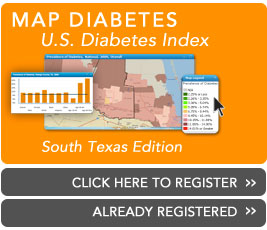Posted by Staff
Clinical Trial News
Wednesday, July 16th, 2014
Diabetes Care July 10, 2014
OBJECTIVE The determinants of insulin-associated weight gain in type 2 diabetes mellitus (T2DM) are partly unknown. Therefore, we conducted a prospective study to identify predictors of insulin-associated weight gain.
RESEARCH DESIGN AND METHODS In patients with T2DM, we assessed physical activity by accelerometry and diabetes-related distress measured by questionnaires before and 6 and 12 months after starting insulin therapy. Glycemic control (HbA1c) and insulin dose were monitored.Read More
Posted by Staff
Clinical Trial News
Wednesday, July 16th, 2014
Diabetes Care July 10, 2014
OBJECTIVE The presence of large subcutaneous adipocytes in obesity has been proposed to be linked with insulin resistance and type 2 diabetes through the “adipose tissue expandability” hypothesis, which holds that large adipocytes have a limited capacity for expansion, forcing lipids to be stored in nonadipose ectopic depots (skeletal muscle, liver), where they interfere with insulin signaling. This hypothesis has, however, been largely formulated by cross-sectional findings and to date has not been prospectively demonstrated in the development of insulin resistance in humans.
RESEARCH DESIGN AND METHODS Twenty-nine men (26.8 ± 5.4 years old; BMI 25.5 ± 2.3 kg/m2) were fed 40% more than their baseline requirement for 8 weeks. Before and after overfeeding, insulin sensitivity was determined using a two-step hyperinsulinemic-euglycemic clamp. Intrahepatic lipid (IHL) and intramyocellular lipid (IMCL) were measured by 1H MRS and abdominal fat on MRI. Subcutaneous abdominal adipose and skeletal muscle tissues were collected to measure adipocyte size and markers of tissue inflammation. Read more
Posted by Staff
Clinical Trial News
Wednesday, July 16th, 2014
The Lancet: 3 July 2014
Background
Many patients with advanced type 2 diabetes do not meet their glycated haemoglobin targets and randomised controlled studies comparing the efficacy of pump treatment and multiple daily injections for lowering glucose in insulin-treated patients have yielded inconclusive results. We aimed to resolve this uncertainty with a randomised controlled trial (OpT2mise).
Methods
We did this multicentre, controlled trial at 36 hospitals, tertiary care centres, and referal centres in Canada, Europe, Israel, South Africa, and the USA. Patients with type 2 diabetes who had poor glycaemic control despite multiple daily injections with insulin analogues were enrolled into a 2-month dose-optimisation run-in period. After the run-in period, patients with glycated haemoglobin of 8·0—12·0% (64—108 mmol/mol) were randomly assigned (1:1) by a computer-generated randomisation sequence (block size 2 with probability 0·75 and size 4 with probability 0·25) to pump treatment or to continue with multiple daily injections.
Read more
Posted by Staff
Clinical Trial News
Wednesday, July 16th, 2014
The Lancet: 16 June 2014
Background
Metformin is the recommended first-line pharmacotherapy for patients with type 2 diabetes. There is no consensus on the optimum second-line pharmacotherapy. We compared the efficacy and safety of the sodium glucose cotransporter 2 inhibitor empagliflozin and the sulfonylurea glimepiride as add-on to metformin in patients with type 2 diabetes.
Methods
In this double-blind phase 3 trial, patients (aged ≥18 years) with type 2 diabetes and HbA
1c concentrations of 7—10%, despite metformin treatment and diet and exercise counselling, were randomly assigned in a 1:1 ratio with a computer-generated random sequence, stratified by HbA
1c, estimated glomerular filtration rate (eGFR), and region, to empagliflozin (25 mg once daily, orally) or glimepiride (1—4 mg once daily, orally) as add-on to metformin for 104 weeks. Patients and investigators were masked to treatment assignment.
Read More
Posted by Staff
Clinical Trial News
Wednesday, July 16th, 2014
The Lancet: 02 June 2014
Background
Diabetes and non-diabetic dysglycaemia are risk factors for accelerated cognitive decline. In this planned substudy of the Outcome Reduction with Initial Glargine Intervention (ORIGIN) trial, we assessed whether normalising glucose with insulin glargine or administering omega-3 fatty acids in this population may slow this process or affect the development of cognitive impairment.
Methods
The ORIGIN trial recruited participants older than 50 years with dysglycaemia who were taking either no or one oral glucose-lowering drug, who had additional risk factors for cardiovascular events, whose HbA
1c was less than 9%, and who were not taking insulin. Participants were recruited from 573 sites in 40 countries. Participants were randomly assigned to either titrated basal insulin glargine targeting a fasting plasma glucose concentration of 5·3 mmol/L or lower or standard care and to either omega-3 fatty acid (1 g) or placebo by a factorial design.
Read More
Posted by Staff
Clinical Trial News
Wednesday, July 16th, 2014
Springer: August 2014
Abstract
Aims/hypothesis
The aim of the study was to compare the effect of six (A6 regimen) vs two meals a day, breakfast and lunch (B2 regimen), on body weight, hepatic fat content (HFC), insulin resistance and beta cell function.
Methods
In a randomised, open, crossover, single-centre study (conducted in Prague, Czech Republic), we assigned 54 patients with type 2 diabetes treated with oral hypoglycaemic agents, both men and women, age 30–70 years, BMI 27–50 kg/m2 and HbA1c 6–11.8% (42–105 mmol/mol), to follow two regimens of a hypoenergetic diet, A6 and B2, each for 12 weeks. Randomisation and allocation to trial groups (n = 27 and n = 27) were carried out by a central computer system. Individual calculations of energy requirements for both regimens were based on the formula: (resting energy expenditure × 1.5) − 2,092 kJ. Read More
Posted by Staff
Clinical Trial News
Wednesday, July 16th, 2014
Springer: July 2014
For many years, the randomised controlled clinical trial (RCT) has been the gold standard for evaluating the efficacy, tolerability and safety of drugs. The modern framework for RCTs was developed in the mid-20th century through the leadership of the UK Medical Research Council and the US National Institutes of Health in collaboration with academic clinical researchers and scientists, among others [1]. Adoption of the RCT by regulatory agencies, including the US Food and Drug Administration (FDA) and the European Medicines Agency, as a requirement for the approval of most new drugs significantly shifted the clinical trial landscape. Today, the majority of patients who participate in RCTs do so in studies sponsored by pharmaceutical and device companies. The advantages of RCTs are well known to most clinical researchers and clinicians. Read More



























